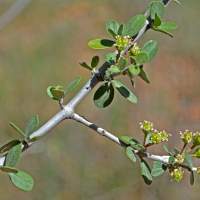The Sonoran Desert is considered to be the most “tropical” of the North American deserts. Its climate is virtually frost-free, and summer rainfall comes from the tropical oceans. The Sonoran Desert’s structurally diverse vegetation, which includes columnar cacti and leguminous trees, certainly differs from those of the shrub-dominated Great Basin, Mohave and Chihuahuan deserts. It has both geographic and biologic connections with more tropical communities. In a single day’s travel,…
The Municipio de Yécora is in the Tropical Madrean zone of the Sierra Madre Occidental in eastern Sonora, Mexico. The flora is very diverse with 1777 taxa in 150 families and 687 genera. The most important families and genera are Asteraceae (14.5% of the flora), Poaceae (11.3%), and Fabaceae (10.6%), Muhlenbergia (38 taxa), Euphorbia (31 taxa), Cyperus (29 taxa), Ipomoea (26 taxa), Quercus (23 taxa including 7 hybrids…
The Sierra la Mariquita is a Sky Island mountain in northern Sonora owned by the Instituto Nacional de Astrofísica, Óptica y Electrónica (INAOE), the Mexican national astronomy agency. The Observatorio Astrofísico Guillermo Haro was built on the summit in 1987. It is located northwest of the copper mining town of Cananea, only 26 km south of the Arizona border. The Sierras la Mariquita and Elenita form a high elevation Sky Island complex connected by oak woodland in Puerto Cananea, north…












